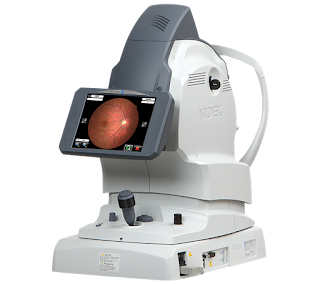Associated Optometry Equipment for Eye Care Professional
Associated
optometry equipment refers to the various tools and instruments used by
optometrists and other eye care professionals to examine and diagnose eye
conditions, assess vision, and prescribe corrective measures. Here are some
commonly used optometry equipment:
Autorefractors:
Associated optometry equipment used to measure refractive errors in the eye,
such as nearsightedness, farsightedness, and astigmatism.
Phoropters:
Also known as refractors, these devices are used to determine an individual's
exact eyeglass prescription by allowing the optometrist to change lenses and
assess visual acuity.
Slit Lamp:
A specialized microscope with a bright light source that allows for detailed
examination of the front structures of the eye, including the cornea,
conjunctiva, iris, and lens.
Ophthalmoscope:
A handheld instrument that enables the optometrist to examine the interior
structures of the eye, such as the retina, optic nerve, and blood vessels.
Tonometer:
Used to measure intraocular pressure, which helps in diagnosing glaucoma. There
are various types of tonometers, including applanation, non-contact (air puff),
and handheld.
Keratometer:
Measures the curvature of the cornea, which aids in fitting contact lenses and
diagnosing corneal irregularities.
Visual Field Analyzer:
Tests the complete field of vision, assessing peripheral and central vision to
detect abnormalities and diagnose conditions like glaucoma and optic nerve damage.
Retinal Camera:
Specialized digital cameras that capture high-resolution images of the retina,
enabling the optometrist to document and monitor retinal health.
Pachymeter:
Measures the thickness of the cornea, which is essential in the management of
conditions like corneal edema and glaucoma.

Lensmeter:
Determines the prescription of existing eyeglasses, including the power, axis,
and prism values.
Optic Nerve Analyzer:
Utilizes advanced imaging techniques to evaluate the optic nerve head and
detect signs of glaucoma or other optic nerve disorders.
Visual Acuity Charts:
Used to measure a patient's visual acuity at various distances, usually
consisting of rows of letters or symbols of decreasing size.
These are just a few examples of the
equipment commonly found in an optometry practice. Optometrists may also use
other specialized devices depending on their specific areas of expertise and
the needs of their patients. Associatedoptometry equipment can help you deliver better patient care while also enhancing
the effectiveness and image of your practice.



Comments
Post a Comment